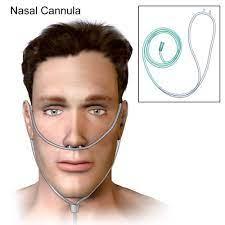After reviewing the admission assessment of a client with chronic pain, which intervention(s) should the nurse include in this client's plan of care? (Select all that apply.)
Provide comfort measures such as topical warm application and tactile massage.
Assist the client to ambulate as much as possible during waking hours.
Determine client's subjective measure of pain using a numerical pain scale.
Encourage increased fluid intake and measure urinary output every 8 hours.
Implement a 24-hour schedule of routine administration of prescribed analgesic.
Correct Answer : A,C,E
Choice A Reason: This is correct because providing comfort measures such as topical warm application and tactile massage can help reduce pain perception and promote relaxation by stimulating non-painful sensory receptors.
Choice B Reason: This is incorrect because assisting the client to ambulate as much as possible during waking hours can increase pain intensity and fatigue by aggravating inflamed or injured tissues. The nurse should encourage moderate physical activity within the client's tolerance level.
Choice C Reason: This is correct because determining client's subjective measure of pain using a numerical pain scale can help assess pain severity and effectiveness of pain management interventions. Pain is a subjective experience that varies among individuals.
Choice D Reason: This is incorrect because encouraging increased fluid intake and measuring urinary output every 8 hours are not directly related to pain management. These interventions are more relevant for clients with fluid imbalance or renal impairment.
Choice E Reason: This is correct because implementing a 24-hour schedule of routine administration of prescribed analgesic can help maintain a steady level of analgesia and prevent breakthrough pain. Chronic pain requires continuous treatment rather than on-demand administration.
Nursing Test Bank
Naxlex Comprehensive Predictor Exams
Related Questions
Correct Answer is A
Explanation
Choice A Reason: This is correct because this response invites the client to express her feelings and thoughts without imposing any assumptions or judgments. It also conveys empathy and respect for the client's autonomy.
Choice B Reason: This is incorrect because this response makes an inference about the client's emotional state without validating it with her. It also may sound patronizing or pitying, which can hinder rapport.
Choice C Reason: This is incorrect because this response may be perceived as intrusive or prying, especially if the client is not ready or willing to share details about her personal relationship. It also may trigger negative emotions or memories that can worsen her mood.
Choice D Reason: This is incorrect because this response may be seen as superficial or irrelevant, especially if the client did not enjoy her visit or had a conflict with her significant other. It also may imply that the nurse is avoiding or dismissing the client's current feelings.
Correct Answer is B
Explanation
Choice A Reason: This is incorrect because decreasing the flow rate to 1 L/minute can compromise the client's oxygenation and worsen hypoxia. The client's oxygen saturation level is below the normal range of 95% to 100%.
Choice B Reason: This is correct because placing padding around the cannula tubing can prevent pressure ulcers and skin breakdown caused by friction and irritation from the tubing.
Choice C Reason: This is incorrect because applying lubricant to the cannula tubing can increase the risk of infection and inflammation of the nasal mucosa. Lubricant should be applied sparingly to the nares only if needed.
Choice D Reason: This is incorrect because discontinuing the use of the nasal cannula can endanger the client's life and cause respiratory failure. The client needs supplemental oxygen to maintain adequate oxygenation.

Whether you are a student looking to ace your exams or a practicing nurse seeking to enhance your expertise , our nursing education contents will empower you with the confidence and competence to make a difference in the lives of patients and become a respected leader in the healthcare field.
Visit Naxlex, invest in your future and unlock endless possibilities with our unparalleled nursing education contents today
Report Wrong Answer on the Current Question
Do you disagree with the answer? If yes, what is your expected answer? Explain.
Kindly be descriptive with the issue you are facing.
